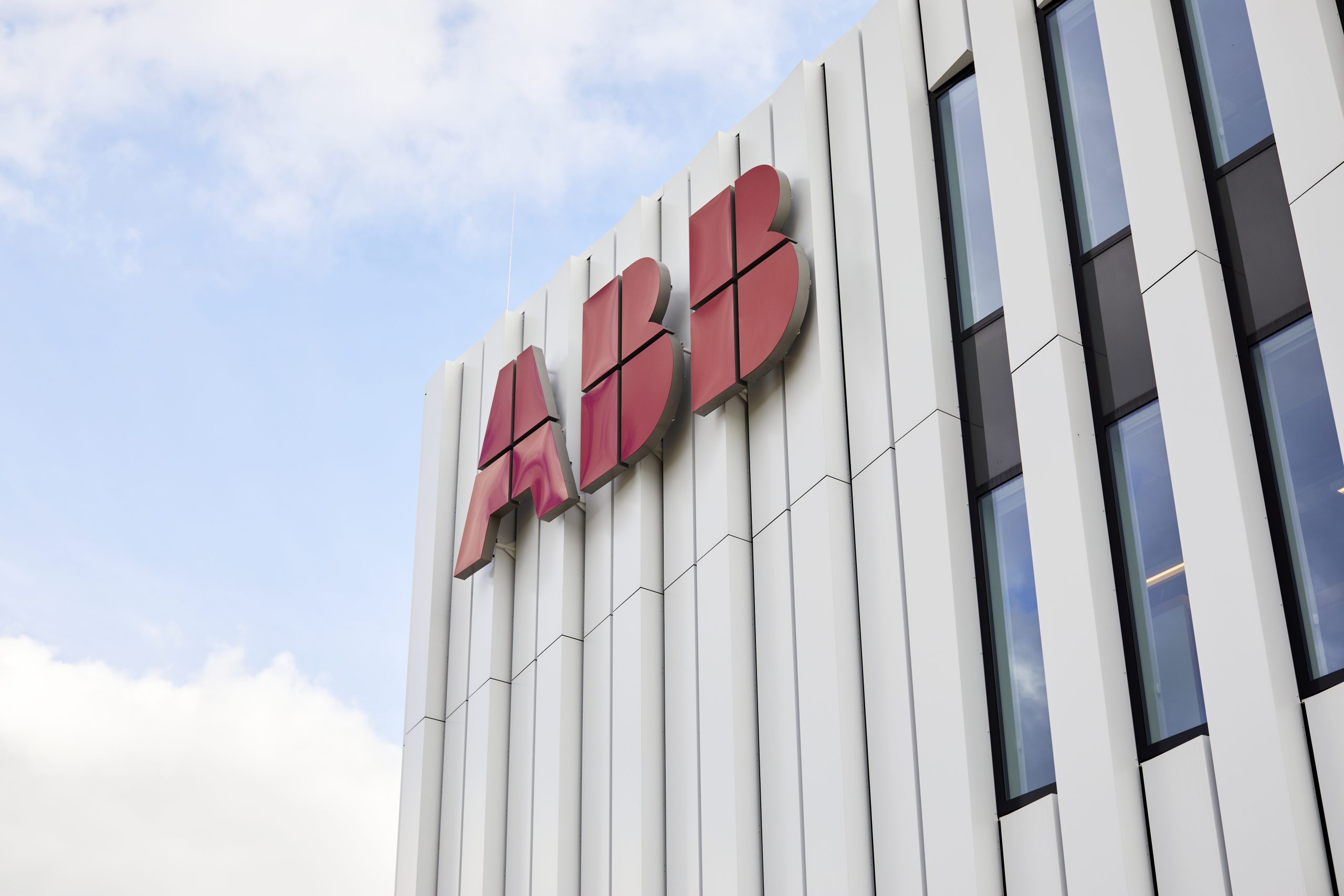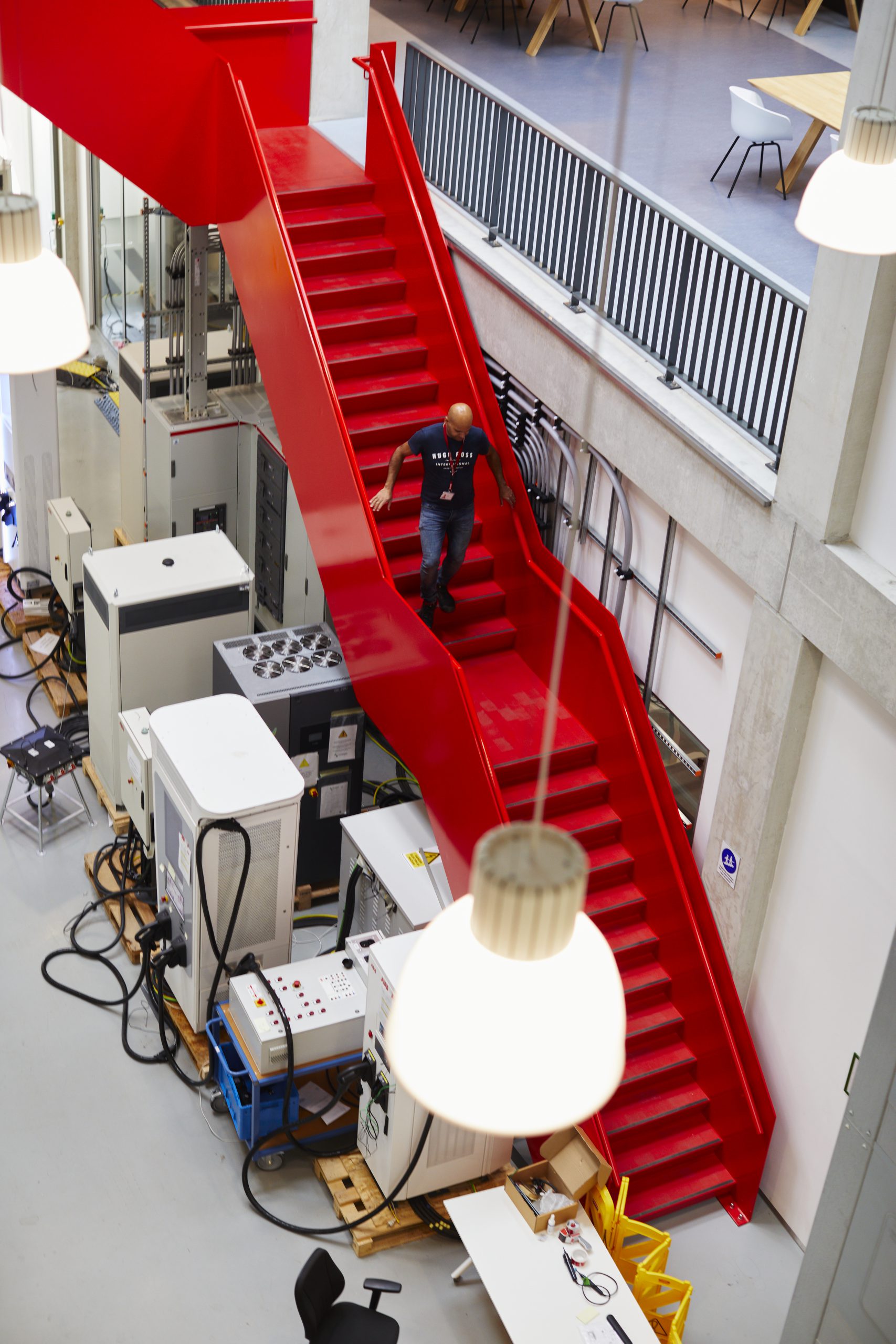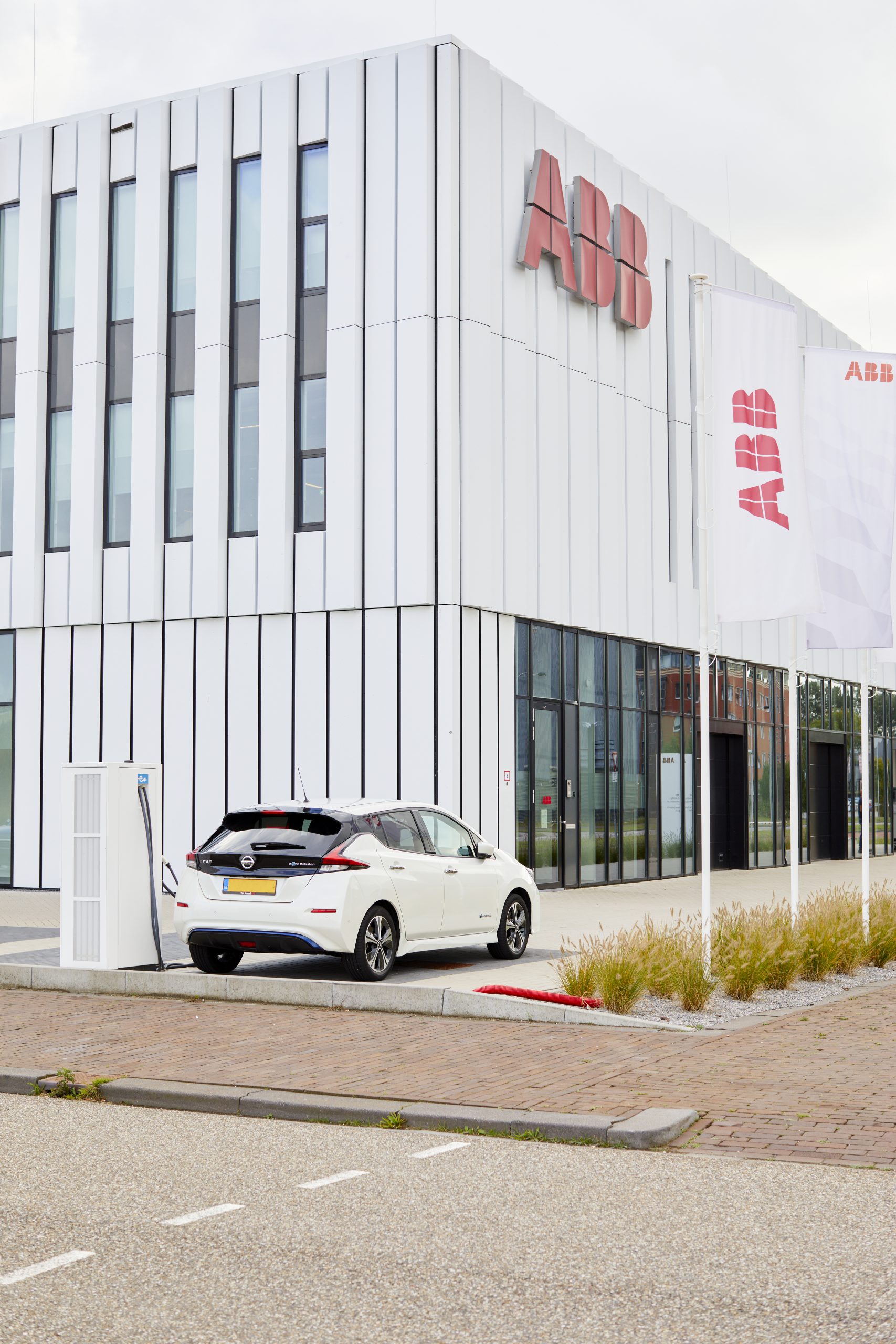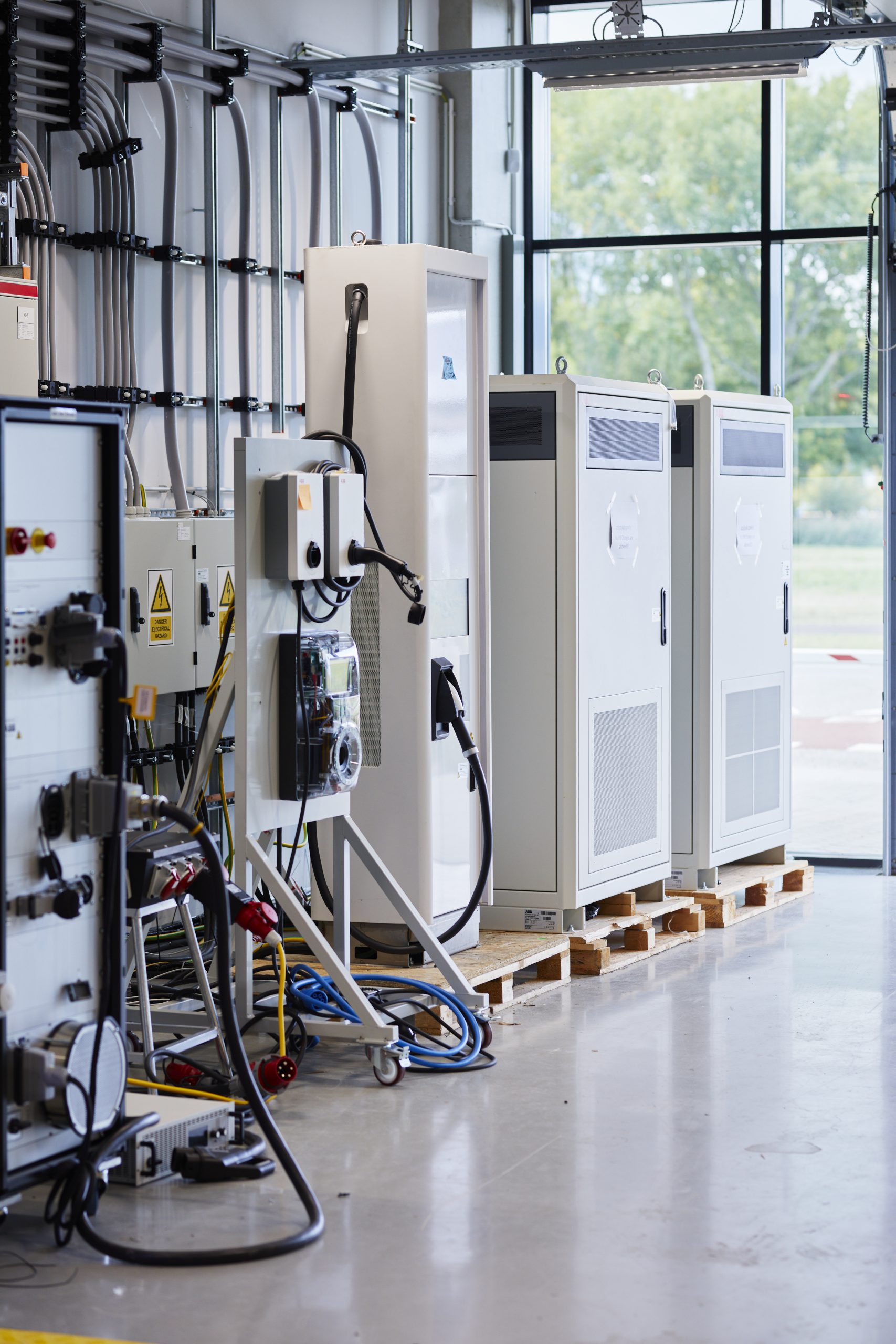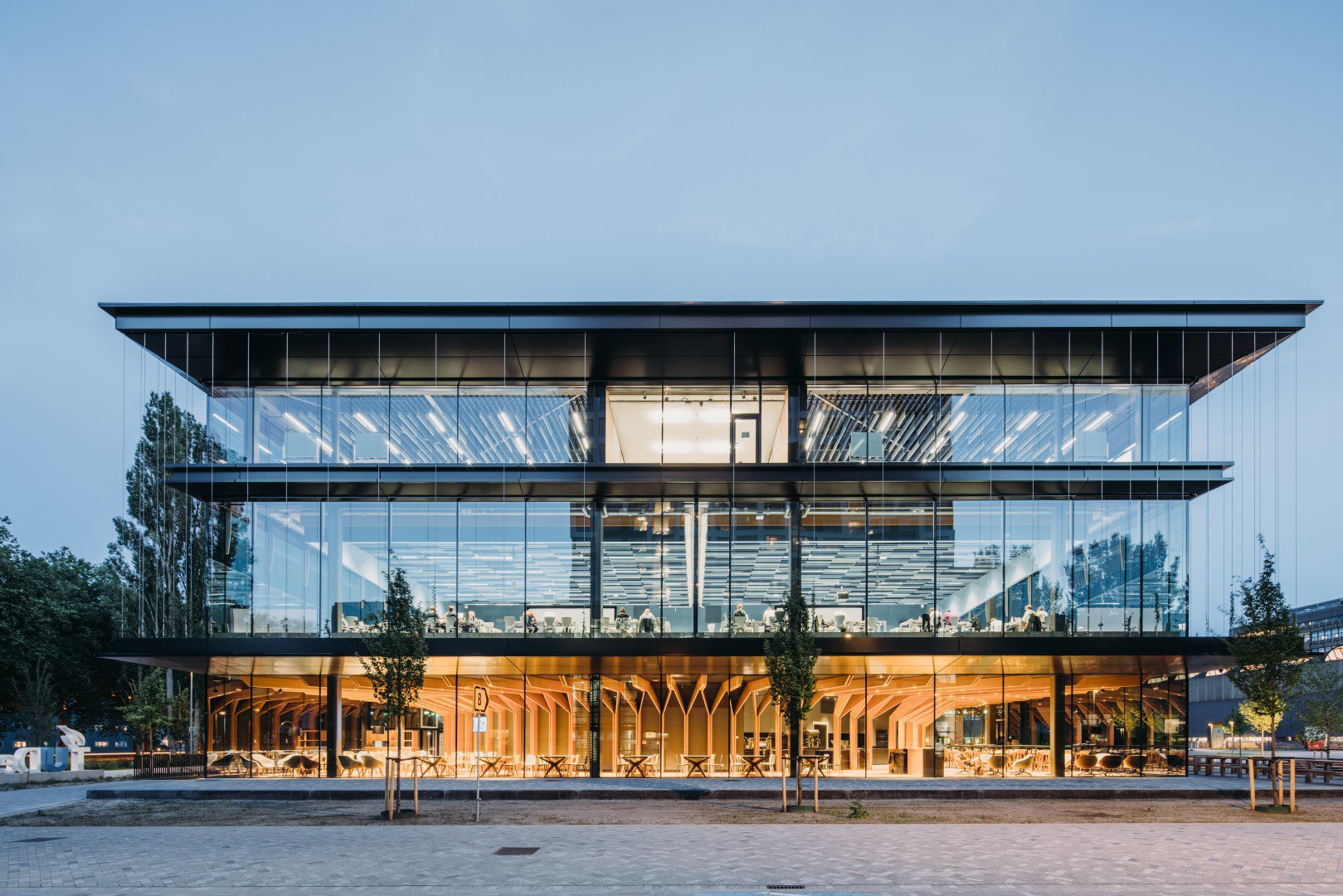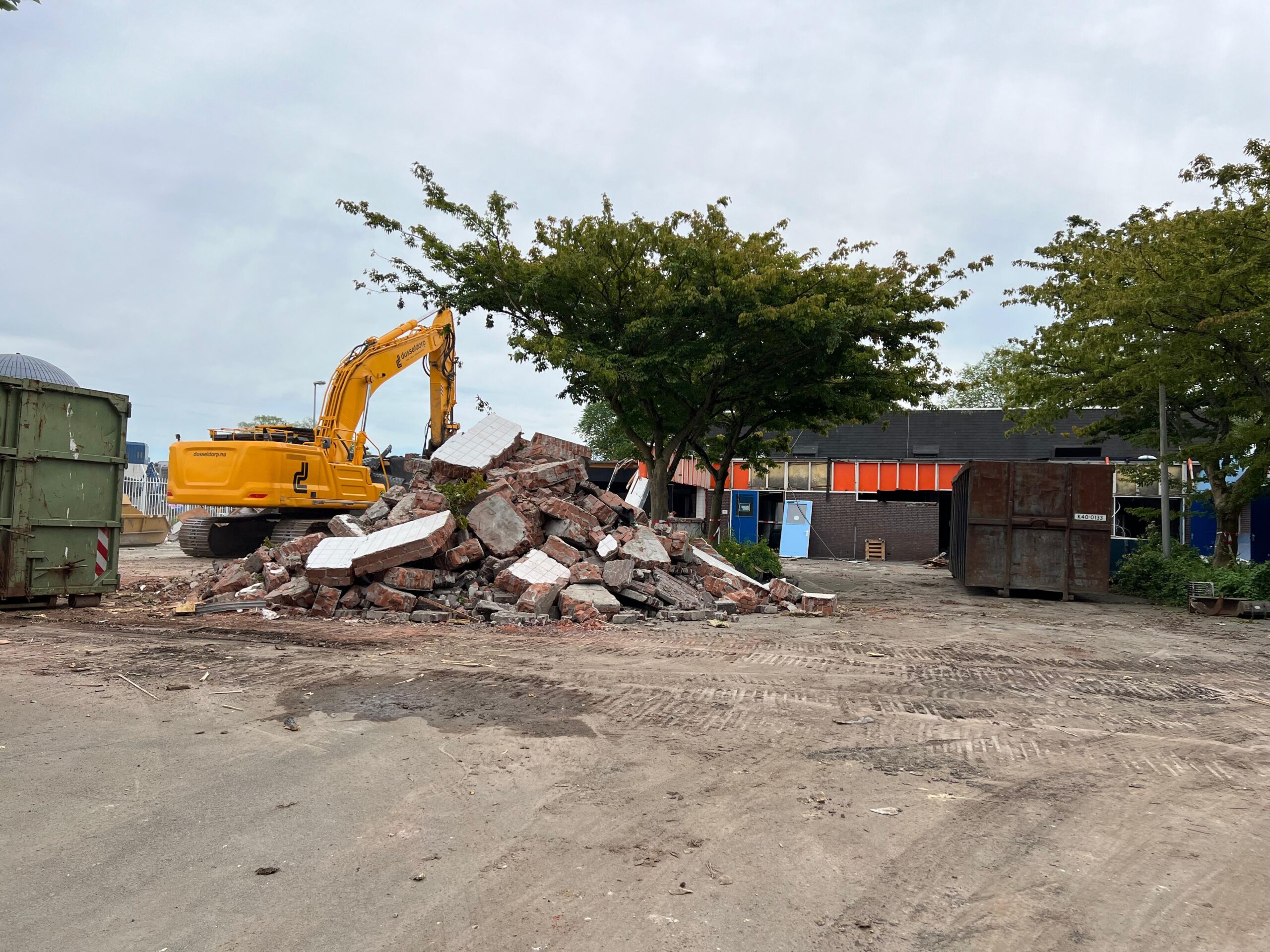An electric bus is parked outside under an enormous rapid charger. A gigantic electric truck is parked inside. In another area, an electric BMW and Porsche are parked next to a brand-new Terra 360: the fastest charger in the world. A red light on the doors to the climate chambers, which are used for testing at temperatures of -40 to +70 degrees, indicates that they are engaged. Welcome to the ABB E-mobility Innovation Lab: the new ABB building on the TU Delft Campus, where smart charging systems and infrastructures are being developed to facilitate the growth of electric transport.
Dennis Brouwer, Product Marketing Director E-mobility, walks proudly through the building. “It fits like a glove. We all love coming here,” he explains. The building is a smart design, with the test areas on the ground and second floors. The offices and coffee lounge are on the first floor in between. This was a conscious decision. “The lay-out is open and transparent, which encourages communication between staff.”
Meeting place
The design has certainly proved its worth during the coronavirus pandemic, now that so many people are still working from home. “It’s become more of a meeting place. The open character works well.” And it’s important to have a good workplace in the current ‘war for talent’. The Firma van Buiten building, which is rising from the ground a few hundred metres further on, will also improve the quality of work.
“Our company is on a ‘mission to zero’ – and electrification could be a huge step forward”
Dennis Brouwer
Product Marketing Director E-mobility
Growth in electric transport
“It’s like returning to the nest for a lot of people; many of us studied at TU Delft.” The close proximity of talent is one of the main reasons for ABB choosing a base on the TU Delft Campus, along with the physical location close to two airports, good public transport and ample research opportunities. Many of the final-year students, interns and technology students looking for a job on the side find their way to ABB. The multinational is also involved in various research projects of TU Delft and collaborates with field labs such as RoboHouse.
The Innovation Lab is playing a key role in the growth of electric transport. During the next ten years, the Netherlands will probably have to install 300,000 alternating current rapid chargers and 40,000 direct current rapid chargers to meet the projected demand for charging capacity. Meanwhile, the ever-increasing range of these electric vehicles means that charging capacity will have to increase, and the requirements set for charging systems will be tightened up accordingly. The Innovation Lab is playing a key role in enabling this growth.
Smart charging
The solutions are being developed together with car manufacturers and installers. It’s all about smart charging. Charging points will be widely installed, varying from light-weight home chargers to more serious ‘rapid charging stations’ for trucks. “The technology behind the charging points must ensure that the right vehicle is charged at the right speed, that several vehicles can be charged at the same time and that the system does not become overloaded,” says Brouwer. “We call this smart charging. Monitoring the systems and paying for the energy used are also important aspects.” These systems are developed and tested in the new lab.
In this respect, ABB is also playing a role in the energy transition. “Our company is on a ‘mission to zero’,” explains Brouwer. “World transport accounts for almost a quarter of all CO2 emissions. Electrification could be a huge step forwards, and we are helping to achieve this by building a sound charging infrastructure so that all those vehicles can be charged.”
Smart building
This ‘mission to zero’ is also reflected in the design of the new building. It is heated and cooled by a heat and cold storage facility operated by Suenso, a company affiliated with TU Delft. Energy consumption is further reduced through solar panels on the roof. The climate chambers, which emit lots of heat, are on the top floor so that the heat can be easily discharged. Energy consumption is constantly monitored and peak demand is met by using batteries. This makes a huge difference to the costs.
The building has been fully computerised: humidity is continuously monitored and adjusted in line with the occupancy rate. Building management and the climate system are obviously in the hands of ABB, as is everything else actually. Even the green emergency exit signs were supplied in-house.
Campus as a living lab
All the testing is carried out within the walls of the new building, but Brouwer still sees the TU Delft Campus as the perfect living lab. He sees opportunities for installing charging points next to new buildings as they are built, such as NEXT Delft. “It would be great if we could install 25 chargers there, and test them. What a fantastic assignment for a couple of final-year students!”
For example: you give the people who use the chargers an app and ask them to indicate what time they intend to go home. The system will calculate how much net capacity is needed to ensure that all staff can head home with a fully charged battery. “Although this could save costs, it could also lead to local peak demand on the net, depending on people’s preferences. This could be a good way to test something like this.” User experiences can also generate useful information. “Will people actually use an app like this?”
Keep innovating
Brouwer’s career has always been about trying out new things. “I always want to do something new and, when I started on this ten years ago, it never occurred to me that I would still be here now,” he says in conclusion. “But it keeps getting better, and bigger, and we keep innovating. And we’re doing our bit for the energy transition. I’m doing what I enjoy and helping to create a better world. It doesn’t get much better than that, does it?”

